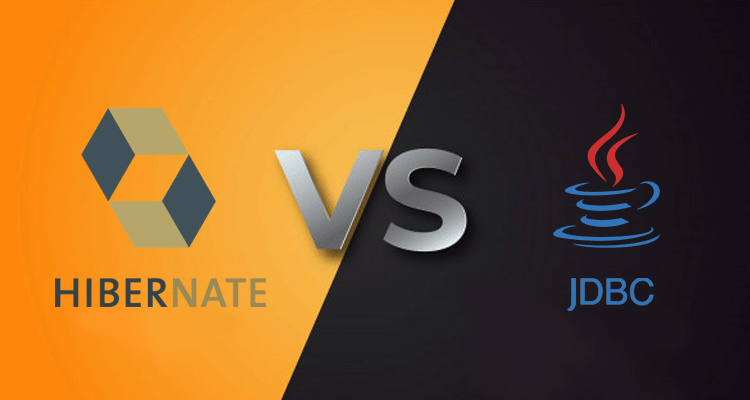HIBERNATE VS JDBC

In JDBC, we have to write code to map an object model’s data to a relational data model and its corresponding database schema. Hibernate is a powerful ORM solution to map Java classes to database tables through object-relational mapping. Hibernate itself takes care of this mapping of these classes into databases through XML files or by using JPA annotations so the developer does not need to write code for this.

JDBC supports only native Structured Query Language (SQL). The developer has to find out the most efficient way to access the database. Hibernate provides a query language which is independent of the type of database called as Hibernate Query Language. It is familiar SQL like syntax and includes full support for polymorphic queries and native SQL statements. It also selects an effective way to perform a database manipulation task for an application.

Hibernate provides transparent persistence which is referenced as the automatic mapping of Java objects to database tables and vice versa. So that the developer does not need to write code explicitly to map database table tuples to application objects during interaction with RDBMS. With JDBC this conversion is to be taken care of by the developer manually with lines of code.
The application uses JDBC to handle persistent data (database tables) having database specific code in a large amount. A table changed or database changed, then it’s essential to change object structure as well as to change code written to map table-to-object/object- to-table. Hibernate provides this mapping itself. The actual mapping between tables and application objects is done in XML files. If there is a change in the Database or in any table then only need to change XML file properties.

Hibernate scales well in any environment, no matter if use it in-house Intranet that serves hundreds of users or for mission-critical applications that serve hundreds of thousands. JDBC can not be scaled easily.
With JDBC, mapping between Java objects and database tables is done manually. Hibernate reduces lines of code by maintaining an object – table mapping itself and returns result to application in the form of Java objects. It relieves the programmer from manual handling of persistent data, hence reducing the development time and maintenance cost.
Hibernate, with Transparent Persistence, the cache is set to application workspace. Automatic Transparent Persistence allows the developer to concentrate more on business logic rather than this application code. With JDBC, caching (retention of data) is maintained by hand- coding.
Hibernate is an open source and free to use for both development and production deployments.
By database version, one can be assured that the changes done by one person are not being rolled back by another one unintentionally. Hibernate enables a developer to define version type field to the application, due to this defined field Hibernate update version field of database table every time relational tuple is updated in the form of Java class object to that table. So if two users retrieve the same tuple and then modify it and one user saves this modified tuple to the database, a version is automatically updated for this tuple by Hibernate. When another user tries to save updated tuple to the database, then it does not allow to save it because this user does not have updated data. In JDBC, there is no check that always every user is updating data. This check has to be added by the developer.

